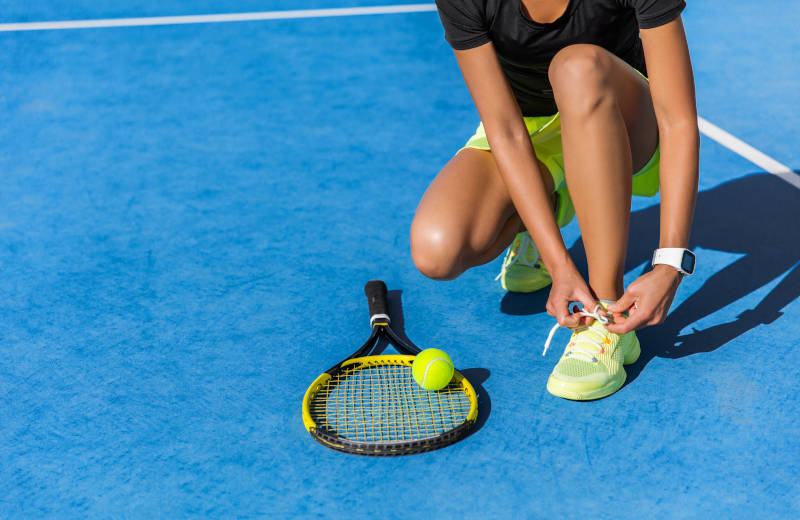Schmidt-Strahl GmbH
In der Loh 39
40668 Meerbusch
Phone: +49 (0)2150 7001 0
Mail: info@schmidt-strahl.de
When tennis courts are illuminated, the recreational value increases enormously: in the darker seasons, players can play longer and when it is hot in summer, late evening hours can also be used for a match.
Since tennis is a very fast game, it places high demands on the players’ visual performance – and thus also on the floodlights. For example, the ball must always be evenly illuminated as it flies across the court so that its speed and trajectory can be well assessed. At the same time, the players must not be dazzled.

Other criteria for tennis court lighting:
Horizontal illuminance levels may only drop marginally even a few meters beyond the sidelines: Players are frequently active in these areas as well.
Good contrast between bright tennis ball and darker court also plays an important role. This contrast should be well balanced so that it is not perceived as too strong at the ends of the court.
And for the different levels of play such as training or competition, the controllability of the floodlight is recommended.
| Class | horizontal illuminance | GR | |
| E h,av lx | E h,min /E h,av | ||
| I | 500 | 0,7 | 50 |
| II | 300 | 0,7 | 50 |
| III | 200 | 0,6 | 55 |
Source: Lichtwissen 08, Fördergemeinschaft Gutes Licht
Schmidt-Strahl GmbH
In der Loh 39
40668 Meerbusch
Phone: +49 (0)2150 7001 0
Mail: info@schmidt-strahl.de